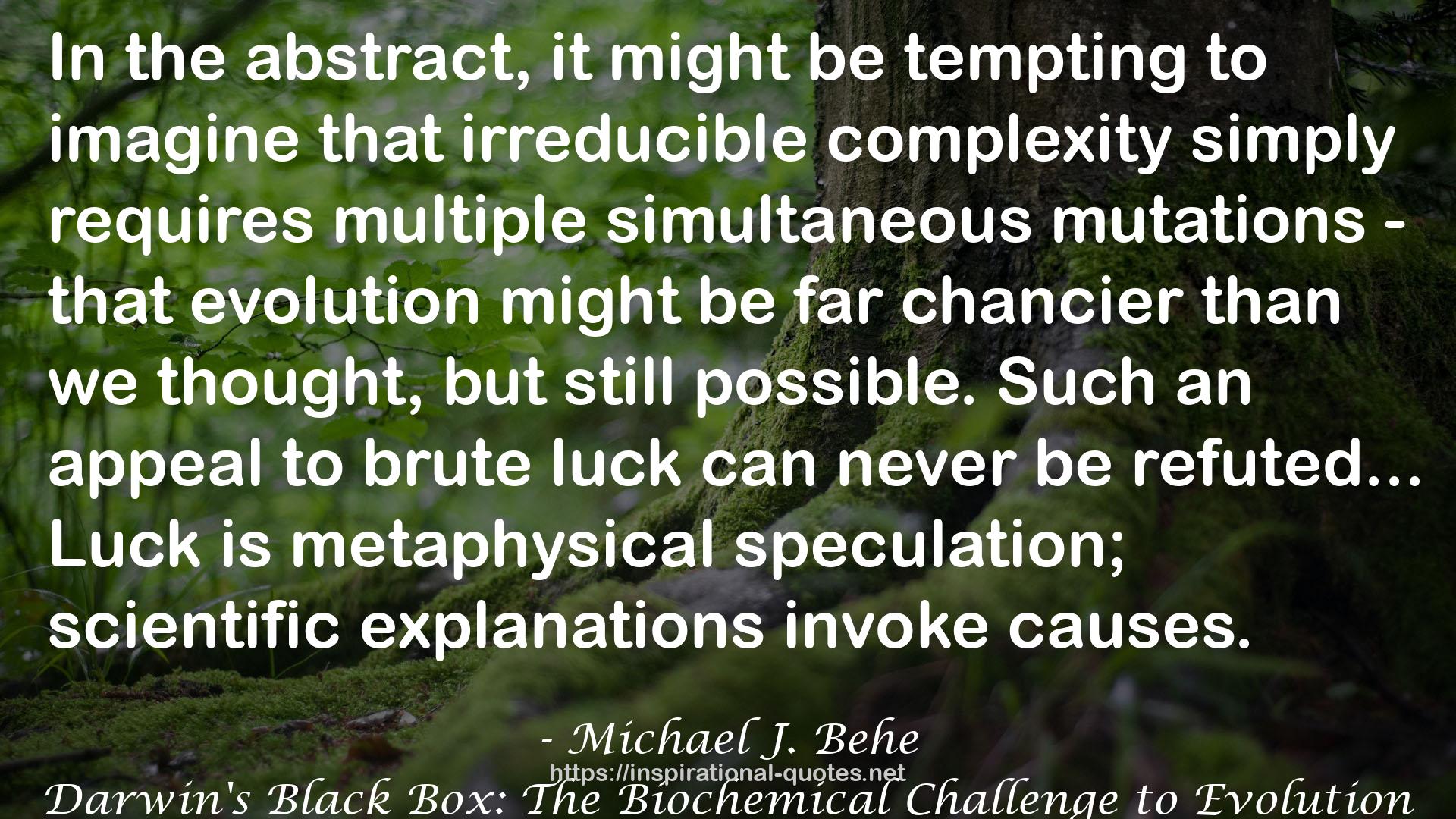4
" It seems to be characteristic of the human mind that when it sees a black box in action, it imagines that the contents of the box are simple.
A happy example is seen in the comic strip <>.
Calvin is always jumping in a box with his stuffed tiger, Hobbes, and travelling back in time, or <> himself into animal shapes, or using it as a <> and making clones of him-self. A little boy like Calvin easily imagines that a box can fly like an airplane (or something), because Calvin doesn't know how airplanes work.
In some ways, grown-up scientists are just as prone to wishful thinking as little boys like Calvin.
For example, centuries ago it was thought that insects and other small animals arose directly fom spoiled food. This was easy to believe, because small animals were thought to be very simple (before the invention of the microscope, naturalists thought that insects had no internal organs). But as biology progressed and careful experiments showed that protected food did not breed life, the theory of spontaneous generation retreated to the limits beyond which science detect what was really happening.
(...)
The key to persuading people was the portrayal of the cells as <>. One of the chief advocates of the spontaneous generation during the middle of the nineteenth century was Ernst Haeckel, a great admirer of Darwin and an eager popularizer of Darwin's theory.
From the limited view of cells that microscope provided, Haeckel believed that a cell was a <> not much different from a piece of microscopic Jell-O. So it seemed to Haeckel that such simple life, with no internal organs, could be produced easily from inanimate material. Now, of course, we know better. "
― Michael J. Behe , Darwin's Black Box: The Biochemical Challenge to Evolution
5
" It seems to be characteristic of the human mind that when it sees a black box in action, it imagines that the contents of the box are simple.
A happy example is seen in the comic strip "Calvin and Hobbes".
Calvin is always jumping in a box with his stuffed tiger, Hobbes, and travelling back in time, or "transmogrifying" himself into animal shapes, or using it as a "duplicator" and making clones of him-self. A little boy like Calvin easily imagines that a box can fly like an airplane (or something), because Calvin doesn't know how airplanes work.
In some ways, grown-up scientists are just as prone to wishful thinking as little boys like Calvin.
For example, centuries ago it was thought that insects and other small animals arose directly fom spoiled food. This was easy to believe, because small animals were thought to be very simple (before the invention of the microscope, naturalists thought that insects had no internal organs). But as biology progressed and careful experiments showed that protected food did not breed life, the theory of spontaneous generation retreated to the limits beyond which science detect what was really happening.
(...)
The key to persuading people was the portrayal of the cells as "simple". One of the chief advocates of the spontaneous generation during the middle of the nineteenth century was Ernst Haeckel, a great admirer of Darwin and an eager popularizer of Darwin's theory.
From the limited view of cells that microscope provided, Haeckel believed that a cell was a "simple lump of albuminous combination of carbon" not much different from a piece of microscopic Jell-O. So it seemed to Haeckel that such simple life, with no internal organs, could be produced easily from inanimate material. Now, of course, we know better. "
― Michael J. Behe , Darwin's Black Box: The Biochemical Challenge to Evolution

